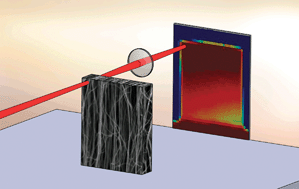Measurement of carbon nanotube microstructure relative density by optical attenuation and observation of size-dependent variations
Abstract
Engineering the density of

* Corresponding authors
a
Mechanosynthesis Group, Department of Mechanical Engineering, University of Michigan, 2350 Hayward Street, Ann Arbor, Michigan 48109, USA
E-mail:
ajohnh@umich.edu
b Thermo-Optics Lab, Department of Mechanical Engineering, Boston University, 110 Cummington Street, Boston, Massachusetts 02215, USA
Engineering the density of

 Please wait while we load your content...
Something went wrong. Try again?
Please wait while we load your content...
Something went wrong. Try again?
S. J. Park, A. J. Schmidt, M. Bedewy and A. John Hart, Phys. Chem. Chem. Phys., 2013, 15, 11511 DOI: 10.1039/C3CP51415C
To request permission to reproduce material from this article, please go to the Copyright Clearance Center request page.
If you are an author contributing to an RSC publication, you do not need to request permission provided correct acknowledgement is given.
If you are the author of this article, you do not need to request permission to reproduce figures and diagrams provided correct acknowledgement is given. If you want to reproduce the whole article in a third-party publication (excluding your thesis/dissertation for which permission is not required) please go to the Copyright Clearance Center request page.
Read more about how to correctly acknowledge RSC content.
 Fetching data from CrossRef.
Fetching data from CrossRef.
This may take some time to load.
Loading related content
